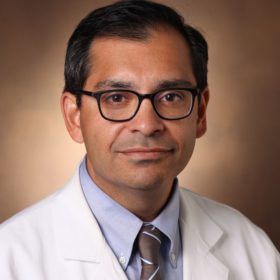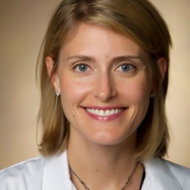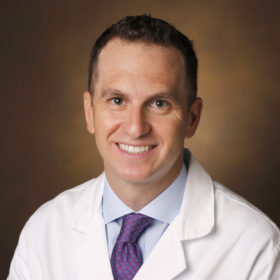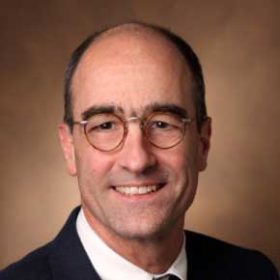Her transplant required a ‘thoughtful, coordinated approach.’
Jia Cade was born with a congenital heart defect, hypoplastic left heart syndrome. That means having only one, not two, pumping chambers in her heart.
In her first year of life, she endured multiple surgeries. Those surgeries solved her most immediate medical problems. Over time though, Cade developed heart failure and abnormal rhythms, common as people with her condition age. “I always knew that I was going to need a heart transplant,” Cade said.”
A community college student from Huntsville, Ala., Cade said she felt “fine” for years – until suddenly in early 2020, she didn’t. For several months, she was in and out of the hospital, not feeling well. One day she was at a restaurant with a friend. “That time I just said, ‘I’m not feeling okay. Something’s wrong.’ I called the ambulance, and I don’t even remember getting inside the ambulance. I think I passed out in the street. I don’t know. I just know I was there and then I wasn’t.”
The ambulance took Cade to a local hospital. She had to be resuscitated — five times. LifeFlight brought her to Vanderbilt, where doctors determined that she now needed that heart transplant.
Efforts to use more hearts means less waiting
Cade and her family were familiar with Monroe Carell Jr. Children’s Hospital at Vanderbilt. Throughout her childhood, her cardiologist was Tom Doyle, M.D., who specializes in pediatric congenital heart disease. But this time she was in the hands of the adult hospital’s heart team.
Cade recalls waking up in the adult hospital to a flurry of providers, tests and education. She was quickly evaluated for a heart transplant and placed on the waiting list to receive a donated heart. She and her family expected that she was facing a long period of needing complex support while awaiting a new heart.
But amazingly, a heart became available in three days. Cade received her heart transplant on April 7. Ashish Shah, M.D., and David Bichell, M.D., performed her transplant surgery.
Cade recognizes that a mere three days on an organ transplant wait list is remarkable: “They keep telling me I was a miracle child, because I truly am.”
Nationwide, average waitlist times for heart transplants range from 70 to more than 500 days. Vanderbilt has an ongoing commitment to finding ways to increase the pool of potential donor organs: an aggressive donor recovery team and innovative approaches to using organs from every possible donor. Because of this, waitlist times at Vanderbilt on average are significantly shorter for most people awaiting a new heart.
According to Kelly Schlendorf, M.D., MHS, medical director of the Adult Heart Transplant Program, “Jia’s case is a great example of the many factors that allow our program to thrive – expertise, collaboration, innovation and a collective desire among everyone on the team to help patients like Jia who come to Vanderbilt because we are truly their last hope.”
Cade’s transplant “was incredibly complex,” Shah said. “Having multiple previous operations and a unique physiology, her transplant required a thoughtful and coordinated approach between Dr. Bichell and myself,” Shah said. “Leveraging the unique relationship between pediatric and adult teams at Vanderbilt, Dr. Bichell and I worked together to safely remove her old heart and implant the new one. Our approach allows Vanderbilt to work with complex patients from around the nation to get a life-saving transplant.”
Vanderbilt works to identify adults with congenital heart defects who need transplants and improve their outcomes, said transplant cardiologist Jonathan Menachem, M.D. “Jia was one of those patients who benefited from our abilities to thoroughly and efficiently evaluate patients with complicated anatomy and challenging comorbidities.” Teamwork is necessary to care for the most high-risk heart patients at Vanderbilt.
After transplant, more challenges and victories
Like many organ transplant recipients, Cade learned that her transplant surgery was not the end of her medical challenges. In the fall she experienced organ rejection. She required a treatment called plasma exchange (PLEX for short), in which a special form of dialysis removes antibodies produced by Cade’s immune system, which were attacking her new heart. Transplant recipients like Cade who have a history of multiple surgeries and prior blood transfusions are at higher risk for rejection episodes.
Eventually, with increases in immunosuppression and lots of close monitoring, Cade’s immune system calmed and she has not had any further difficulty with her body rejecting her new heart. By March 2021, she was down to follow-up appointments with the transplant team every six weeks, and eager to resume school, work – everything – at full tilt.
In hindsight, Cade admits, she realized she was pushing herself too hard in the months leading up to her collapse. She’s a full-time student, trying to decide what career path to take. She was also working three jobs. “I have a struggle with not pushing myself,” she said – “not pushing myself to the max.”
That urge to rev up to maximum effort didn’t go away with her heart transplant. “After they told me, ‘You have a full heart now,’ in the back of my head I’m like, ‘I did all of this on a half heart. Imagine what I can do with a full one!’ I was doing the most, and they were like, ‘You need to calm down. Have a seat.’ ”
“I’m young and so I’m able to bounce back so easily, and so physically I’m fine,” Cade said. “Just mentally, I hate being told, no, I can’t do something.”
Despite her energetic, sometimes impulsive personality, Cade says she’s learned to take a moment to consider any decisions or activity, to ask herself if something would put the health of her new heart at risk.
What comes next
With counsel from her parents, Cade agreed that she’s not quite ready to resume working, though she is back to her education. By March 2021 she was starting to put more deliberate thought into what career path to take. So far, her community college courses have been prerequisites that will allow her to continue her education in almost any field. She’s still not certain which to pursue, but says she now feels an increasing need to choose something meaningful, something she’s truly meant to do.
“Before my transplant, I was like, ‘I just want to see where the wind blows me.’ The wind wasn’t really blowing me anywhere, to be honest,” Cade said. “And so now I’m at the stage where I’m like, ‘What am I meant to do? What am I meant to be?’ ”
Vanderbilt University Medical Center performs more heart transplants than any other program in the country. Our vast experience means expert care for you and your loved one. Learn more about our life-changing care.
Featured
Ashish Shah, M.D.
Ashish Shah, M.D., is a professor of cardiac surgery and the Alfred Blalock Endowed Director and Chair of the Department of Cardiac Surgery at Vanderbilt University Medical Center. His research and clinical interests include cardiac surgery, heart transplantation and ex vivo reconditioning.
Kelly Schlendorf, M.D.
Kelly Schlendorf, M.D, M.H.S., is an assistant professor and the medical director of the Heart Transplant Program at Vanderbilt University Medical Center. It is the top heart transplant program in the Southeast region for volume and combined adult and pediatric procedures.
Jonathan Menachem, M.D.
Jonathan Menachem, M.D., is assistant professor in the Division of Cardiology at Vanderbilt University Medical Center. His research has focused on mechanical support in patients with transposition of the great vessels, as well as transplantation in patients with complex congenital heart disease.
David P. Bichell, M.D.
David P. Bichell, M.D., is William S. Stoney, Jr. Chair in Cardiac and Thoracic Surgery, chief of pediatric cardiac surgery, and professor of clinical cardiac surgery at Vanderbilt University Medical Center. He specializes in the surgical treatment of congenital heart disease with a focus on minimally invasive procedures. His research interests include valve and conduit innovations, pharmacologic advances in the treatment of children, and brain protection during neonatal surgery.








